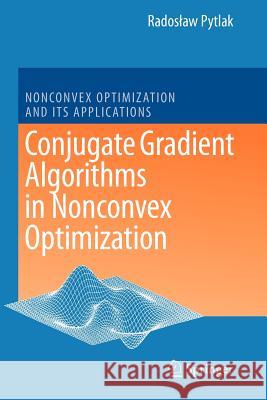Conjugate Gradient Algorithms in Nonconvex Optimization » książka
Conjugate Gradient Algorithms in Nonconvex Optimization
ISBN-13: 9783642099250 / Angielski / Miękka / 2010 / 478 str.
Conjugate direction methods were proposed in the early 1950s. When high speed digital computing machines were developed, attempts were made to lay the fo- dations for the mathematical aspects of computations which could take advantage of the ef?ciency of digital computers. The National Bureau of Standards sponsored the Institute for Numerical Analysis, which was established at the University of California in Los Angeles. A seminar held there on numerical methods for linear equationswasattendedbyMagnusHestenes, EduardStiefel andCorneliusLanczos. This led to the ?rst communication between Lanczos and Hestenes (researchers of the NBS) and Stiefel (of the ETH in Zurich) on the conjugate direction algorithm. The method is attributed to Hestenes and Stiefel who published their joint paper in 1952 101] in which they presented both the method of conjugate gradient and the conjugate direction methods including conjugate Gram Schmidt processes. A closelyrelatedalgorithmwasproposedbyLanczos 114]whoworkedonalgorithms for determiningeigenvalues of a matrix. His iterative algorithm yields the similarity transformation of a matrix into the tridiagonal form from which eigenvalues can be well approximated.Thethree-termrecurrencerelationofthe Lanczosprocedurecan be obtained by eliminating a vector from the conjugate direction algorithm scheme. Initially the conjugate gradient algorithm was called the Hestenes Stiefel Lanczos method 86]."











